Imaging Reagents, Photoswitches, Photochemistry and Biophysics
Oliver Thorn-Seshold's chemical biology group moved to TU Dresden (link) in 2024.
Julia Thorn-Seshold's redox biology group moved to UKDD (link) in 2025.
This webpage is no longer maintained.
(A) Photoswitches Unleashed: Photoswitchable reagents, such as ours for tubulin and for other biological targets, rely on the right merge of photoswitch with bioactive pharmacophores in order to to address these proteins with the right assay performance. Azobenzenes are popular go-to photoswitches for chemical reasons (ease of synthesis, reliability of photoswitching), but research from us and many others is making it clear that there are large application spaces in biology (particularly, systemic long-term in vivo biology) where photoswitches with different properties are urgently needed.
One area where we are making unique contributions is in the discovery, optimisation, and biological application of truly general red/NIR-responsive azobenzene bioactives: a challenge that had never been solved before. We do this by escaping the usual restrictions of singlet manifold photoswitching, and instead entering the realms of photoredox or induced intersystem crossing* (*at least, we think so: the mechanism is still unsolved).
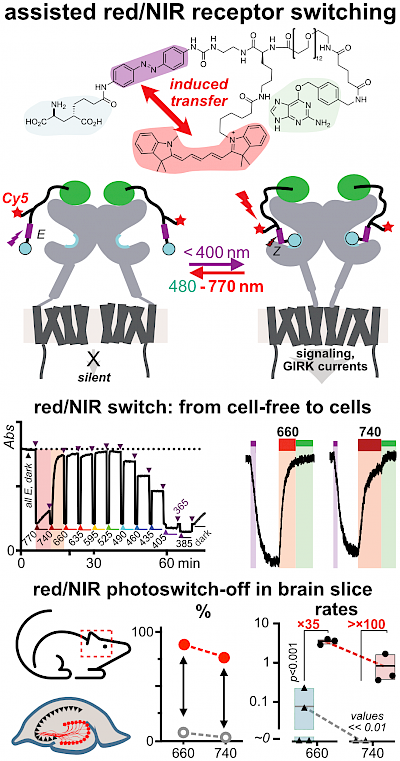 |
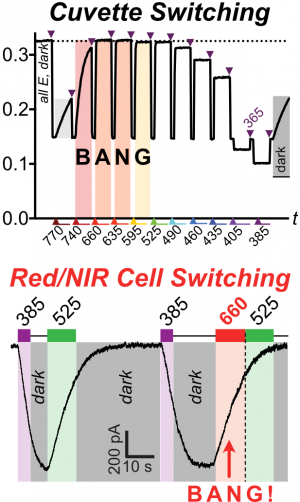 |
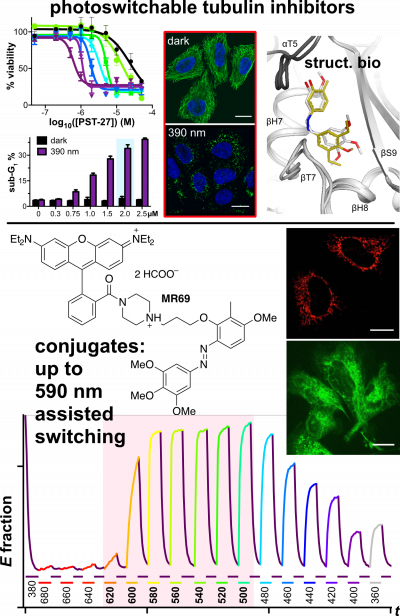 |
| Brave NIR World 2: induced triplets allow NIR bioactivity control in mouse brain slices (ChemRxiv 2024) |
Brave NIR World 1: singlet photoredox allows far-red bioactivity control in cells (ChemRxiv 2023) | NIR way: our NIR work begins with a cellularly-failed, but photochemically spectacular, part of this study (ChemSci 2024) |
(B) Imaging Agents: Optical imaging methods have driven much of the extraordinary progress in biology over the last 50 years, and innovations are only accelerating with time. We are contributing to this area by pioneering ways to
(i) convert known fluorophores into high-brightness, long-lived, photoresistant and biologically innocent imaging agents;
(ii) merge photoswitches with imaging for powerful photoacoustic imaging (MSOT); and
(iii) develop readout probes for transitions of biochemical heterogeneity (ferroptosis and membrane integrity).
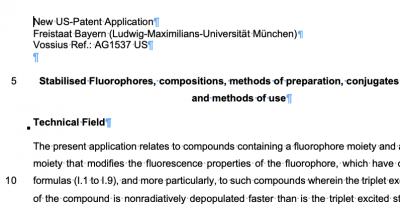 |
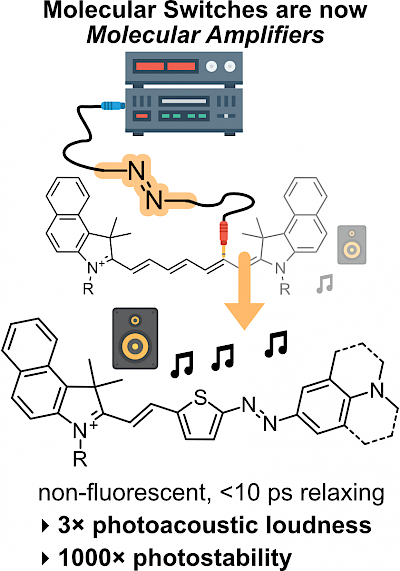 |
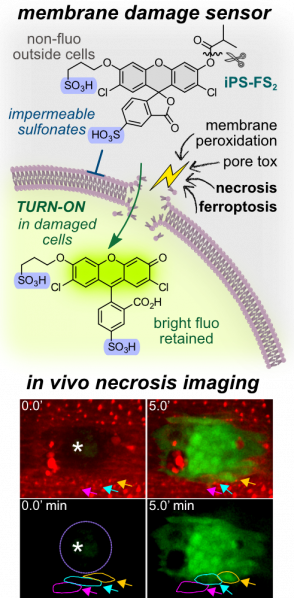 |
| Rethinking Fluorescence, 1: suppressing triplet states on the fly (US Pat. App. 2024) | Rethinking switches and imaging, 1: how to image a photoswitch using acoustics (Angewandte 2024) |
Probes for heterogeneous biosystems, 1: membrane integrity probes for in vivo imaging of ferroptosis and necrosis (JACS 2024) |
(C) Photochemistry and Biophysics: Photoswitchable reagents, such as ours for tubulin and for other biological targets, rely on the right merge of photoswitch with bioactive pharmacophores in order to to address these proteins with the right assay performance. Azobenzenes are popular go-to photoswitches for chemical reasons (ease of synthesis, reliability of photoswitching), but research from us and many others is making it clear that there are large application spaces in biology (particularly, systemic long-term in vivo biology) where photoswitches with different properties are urgently needed.
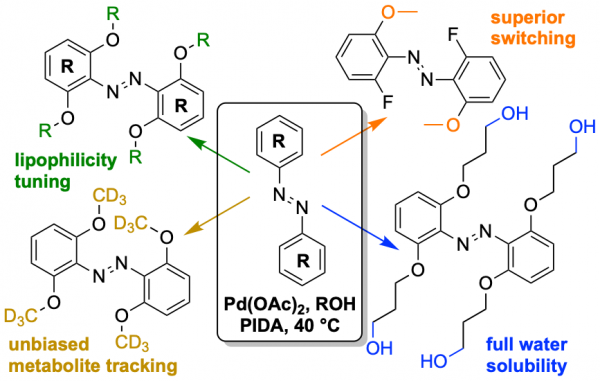 |
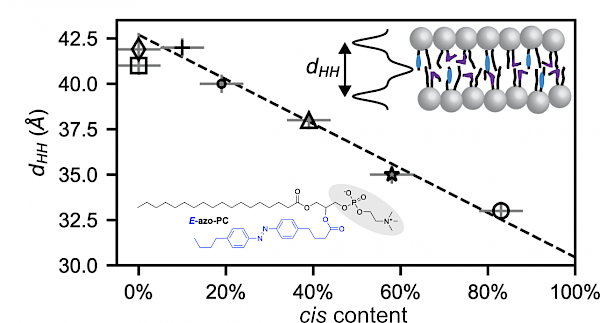 |
| Catalytic access to per-ortho-alkoxylated azobenzenes: better E→Z & Z→E yields, tuned physicochemical properties (JOC 2022) | Z→E switching below 1.0 nm, and a noninvasive method to monitor E/Z ratios, via soft and hard X-rays (Nanophotonics 2022) |
Photobleaching resistance, wavelength tuning, ultrafast dynamics - fascinating photochemistry!
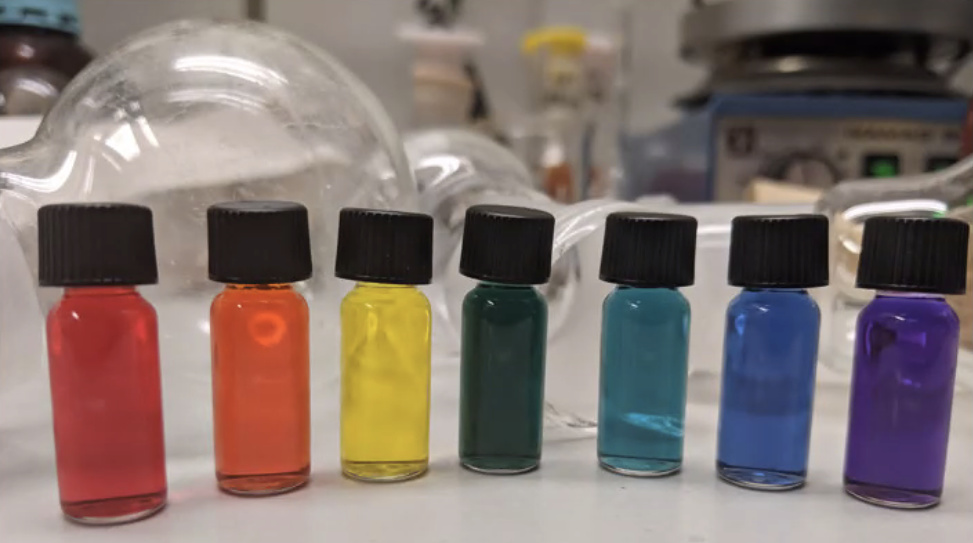 Stay wavelength-tuned... |
 |


